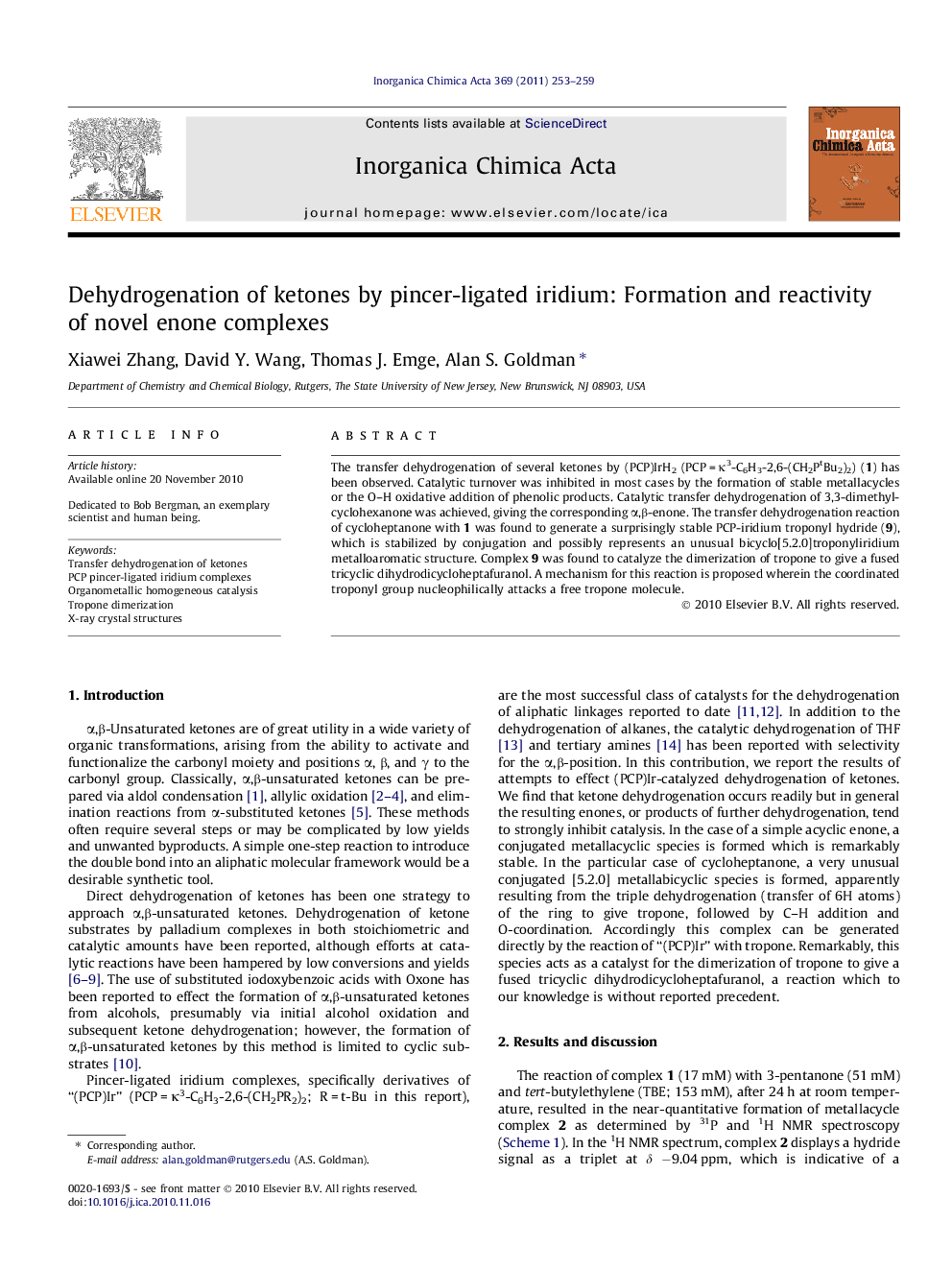| Article ID | Journal | Published Year | Pages | File Type |
|---|---|---|---|---|
| 1307686 | Inorganica Chimica Acta | 2011 | 7 Pages |
The transfer dehydrogenation of several ketones by (PCP)IrH2 (PCP = κ3-C6H3-2,6-(CH2PtBu2)2) (1) has been observed. Catalytic turnover was inhibited in most cases by the formation of stable metallacycles or the O–H oxidative addition of phenolic products. Catalytic transfer dehydrogenation of 3,3-dimethylcyclohexanone was achieved, giving the corresponding α,β-enone. The transfer dehydrogenation reaction of cycloheptanone with 1 was found to generate a surprisingly stable PCP-iridium troponyl hydride (9), which is stabilized by conjugation and possibly represents an unusual bicyclo[5.2.0]troponyliridium metalloaromatic structure. Complex 9 was found to catalyze the dimerization of tropone to give a fused tricyclic dihydrodicycloheptafuranol. A mechanism for this reaction is proposed wherein the coordinated troponyl group nucleophilically attacks a free tropone molecule.
Graphical abstractThe transfer dehydrogenation of several ketones by (PCP)IrH2 has been observed. Catalytic turnover was inhibited in most cases by the formation of stable metallacycles or phenolic O–H addition products. Transfer dehydrogenation of cycloheptanone gave an iridium troponyl complex (9), which may represent an unusual bicyclic metalloaromatic species. Complex 9 catalyzes a novel dimerization of tropone.Figure optionsDownload full-size imageDownload as PowerPoint slideResearch highlights► The transfer dehydrogenation of several ketones by (PCP)IrH2 has been observed. ► Catalytic transfer dehydrogenation of 3,3-dimethylcyclohexanone was achieved. ► Most dehydrogenated ketones added to (PCP)Ir to form metallacycles or O–H addition products. ► Dehydrogenation of cycloheptanone gave an unusual bicyclo[5.2.0]troponyliridium hydride. ► Catalytic dimerization of tropone gave a novel fused tricyclic dihydrodicycloheptafuranol.
